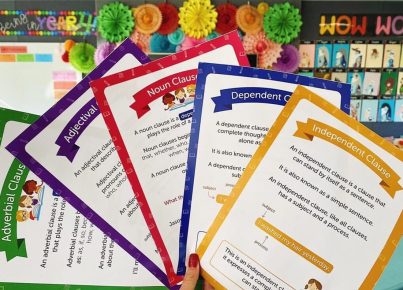The English language is fraught with grammar, spelling, and syntax challenges that can easily trip up students as well as educators. Among the most common sources of confusion for learners are the words “affect” and “effect.” While these two terms may appear similar, they have distinct meanings and uses that are essential to master for accurate communication. In this article, we’ll discuss simple tricks to help your students grasp the differences between “affect” and “effect.”
1. Explain their meanings:
Start by clearly defining what each word means. “Affect” is a verb that typically conveys because or influence; it usually means to change or modify something. For example, “The weather can affect our mood.” On the other hand, “effect” is a noun that signifies an outcome or consequence brought about by some external force. For instance, “The effect of exercise on health is generally positive.”
2. Use mnemonics:
Creating a mnemonic can help students remember the difference between the two words more easily. Tell your students, “An ‘a’ in ‘affect’ represents an action, while an ‘e’ in ‘effect’ stands for an end result.” This way, they will associate the starting letters of each term with their respective functions as a helpful memory aid.
3. RAVEN acronym:
Another helpful mnemonic is RAVEN: Remember Affect Verb Effect Noun. This acronym not only reminds students of each word’s part of speech but also allows them to keep it in mind when tackling writing assignments.
4. Multiple meanings rule:
While exceptions exist (e.g., affect can sometimes be a noun referring to someone’s emotional state), teaching your students to focus primarily on understanding and remembering their most commonly used meanings will suffice for most literary situations.
5. Provide plenty of examples:
Reinforce these concepts by providing your students with numerous example sentences that use both “affect” and “effect.” Ask them to identify the correct word in each scenario, encouraging them to think about their respective parts of speech. For instance:
– The new curriculum will affect student’s performance. (Affect is a verb)
– The effects of social media on teenagers are hotly debated. (Effect is a noun)
6. Encourage practice and corrections:
Encourage students to practice using “affect” and “effect” regularly in their writing assignments. Whenever they make mistakes, gently correct their usage through feedback and reminders about these tips, reinforcing the learning process.
7. Use visual aids:
If your students respond well to visual learning, you can create a simple graphic organizer, which contrasts the uses of “affect” and “effect.” Include the mnemonics and examples discussed before as a quick reference tool for your students.
With these simple tricks, your students will steadily grasp the differences between “affect” and “effect.” It’s crucial to be patient and offer plenty of opportunities for practice so they can master this tricky aspect of the English language. Soon enough, your students will confidently use these terms in their writing with minimal errors.





